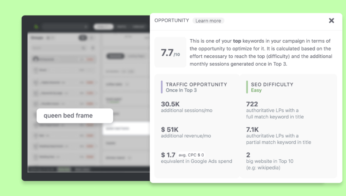Normally, you can measure the return on an investment (ROI) by taking the gain generated by the investment and subtracting its cost. Sounds simple enough, right? Well, in the search engine optimization (SEO) world, it’s a bit less straightforward.
That’s because it can be hard to pinpoint exactly how much of your sales or leads are generated by SEO alone. It’s also hard to track exactly which costs have gone into designing and implementing your SEO strategy.
Given this difficulty, I’ve gone ahead and outlined my formula for calculating and monitoring the ROI of an SEO campaign. As the owner of two full-service digital marketing agencies, I’ve tracked SEO performance across countless client campaigns for over a decade. After years of success in the field, I thought I’d share my basic strategy for SEO analytics and monitoring.
Where ROI Meets SEO For E-Commerce
For those who specialize in e-commerce, there are specific ways you can track and manage your SEO performance. Thanks to Google Analytics (yes, including the free version), you can do this fairly simply. Below, I’ve outlined the basic steps involved.
First, open your Google Analytics account and navigate to the “ADMIN” panel within the left-hand sidebar. From there, navigate to the “VIEW” tab and select “e-Commerce settings” and finally “Enable Enhanced e-Commerce Reporting.”
Whether you use Shopify or WooCommerce, your next step is to initialize tracking on these platforms so the data can be communicated to Google Analytics. Here’s a thorough guide on how to do that. Once complete, you’ll be able to view a variety of key metrics, such as:
Read more: How To Check The Return On Investment Of Your Search Engine Optimization







